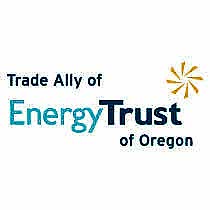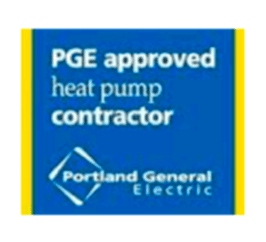Last Updated: January 31st, 2023
As you search for the ideal HVAC system, you will encounter various industry-standard efficiency ratings. The higher the energy efficiency of your product, the lower your long-term energy costs will be.
In addition to offering high-quality products and exceptional customer service, we want to educate our customers. Obviously, the more efficient a product is, the greater your long-term energy savings will be.
Here is what you need to know when selecting a furnace, heat pump, or air conditioner for your home:
What is an Energy Star Rating?
The ENERGY STAR rating system, which was launched in 1992 by the US Department of Energy and is now managed by the EPA, is a nationally recognized symbol for energy efficiency that can be found on many appliances.
It provides simple, credible, and unbiased information to consumers and businesses so they may make well-informed decisions about the energy footprint of the HVAC products they are buying.
BTUs and Efficiency Ratings
To know how Energy Star ratings operate, it’s important to understand what a British Thermal Unit (BTU) is. A BTU is a traditional measure of energy that represents the amount of energy required to raise the temperature of one pound of liquid water by one degree Fahrenheit at sea level.
HVAC systems are rated by how many British Thermal Units per hour the product can add or remove from the air. When shopping for an HVAC system it is good to keep in mind the BTUs you will need to keep your home or room comfortable.
More is not always better, making it important to know how to properly size your HVAC system.
What is a SEER Rating?
SEER (Seasonal Energy Efficiency Ratio) measures and rates the efficiency of air conditioners and heat pumps to effectively cool a home.
During the peak cooling season, the SEER rating tells you how much energy is required to cool an entire room versus how much energy it takes to run the HVAC unit. All new HVAC systems are required by law to have a minimum 13 SEER rating and some warmer regions have higher base rating requirements such as the south and southwest.
By 2023, all northern regions will have a requirement of 14 SEER as well. At Jacobs, we carry a full line of Carrier air conditioner units with ratings from 13.0 all the way up to 21.

The SEER ratings on air conditioners are more than just a little sticker on the side of your air conditioning unit. These numbers are crucial when looking for the best air conditioner for your home.
In addition to the minimum requirements, SEER ratings provide a wealth of information about the AC unit helping you to anticipate how much you should spend on energy each year. This allows you to compare systems based on monthly energy bills.
Additional reading: SEER Rating Explained: What is a Good SEER Rating?
What is AFUE Energy Rating?
The Annual Fuel Utilization Efficiency (AFUE) is a standard measurement of how effectively a furnace converts energy from the fuel it uses to warm the air for your home.
The Department of Energy requires all furnace manufacturers to display each unit’s AFUE on the Energy Guide label, allowing customers to compare the energy efficiency of different furnaces. The minimum standard requirement for new furnaces is currently 80 percent AFUE.
To determine the AFUE rating, the total annual heating output from the furnace is compared to the amount of fuel input over the same period. The published rating of a furnace should be considered its average rating, not its efficiency level throughout any one day.
At Jacobs, we offer a wide selection of Carrier furnaces with AFUE ratings ranging from 80 percent to 98.5 percent.
Additional reading: AFUE Rating Explained: What is a Good AFUE Rating?
What is a HSPF Rating?
HSPF (Heating Seasonal Performance Factor) measures the heating efficiency of a heat pump.
HSPF is calculated by measuring the electricity used for heating, its power consumption in kilowatt-hours, the average amount of heat received, and the required number of BTUs.
All new heat pumps are required to have a minimum 8.2 HSPF rating and to earn an Energy Star rating it must be 8.5 or above.
In the typically mild winters of Portland, a heat pump with an HSPF rating of 8.5 or above works well. At Jacobs, we offer a wide selection of high-efficiency Carrier heat pumps with HSPF ratings from 9 to an industry-leading 13.
Additional reading: HSPF Rating Explained: What is a Good HSPF Rating?
What is an EER Rating?
EER or Energy Efficiency Ratio is a rating similar to SEER, in that it determines how well a system can produce a comfortable environment in your home.
It’s calculated with the same formula as SEER, and it measures the system’s ability to generate a comfortable environment.
Energy Efficiency Ratio is typically used to rate room air conditioners that are running constantly at 95 degrees while a SEER is a rating for a central air conditioner that is running on and off in variable temperatures.
Cost Differences of High vs Low Efficient Systems
When shopping for a model with good ratings, bear in mind that models with higher numbers are often deluxe heating units with extra features and perks. Those products also generally come at a higher price, so you should calculate how much money you will save on your energy bill when making your selection.
Finding your exact savings will depend on the energy efficiency ratings of your current HVAC unit versus the ratings of your new unit, how often it runs throughout the year, changes in temperature, and a few other factors.
It is important to get the right size HVAC unit for your home. If your unit is too big or too small it will use more fuel and wear out sooner, reducing efficiency and lifespan.
Additional reading: How Green is Your Portland Home
How Do I Find My Current HVAC Energy Efficiency Ratings?
Locating your HVAC system’s rating can be done in a few ways. If your system is newer you can locate the rating tag and energy guide on the HVAC unit itself. The Energy Guide Label may tell you the:
- Model name
- Unit type
- SEER rating
- EER rating
- HSPF rating
- and projected annual running costs
The energy efficiency rating may also be found on the brand’s website in the product description or on online specifications sheets connected to the product page.
If none of these options are available, you can also get the efficiency information by calling or emailing your HVAC brand’s customer service representatives.
How Jacobs Can Help
If you are concerned about your current HVAC system and need expert advice, a Jacobs Heating & Air Conditioning consultant can perform a full inspection of your system and offer options.
If you know that it is time for an HVAC upgrade or to want to replace your current HVAC unit with a highly efficient system, give us a call for a quote. We offer a variety of flexible financing options and we’ll walk you through the process of how to pay for your new system.
Avoid extra costs and fewer repairs by scheduling a tune-up for your existing system before issues arise. Our maintenance plans keep your system running like clockwork without any stress or hassle. No matter what you need we’re always just a phone call away. You are welcome to review our statement on COVID-19 and how we’re taking precautions to protect you, our team, and our communities.










